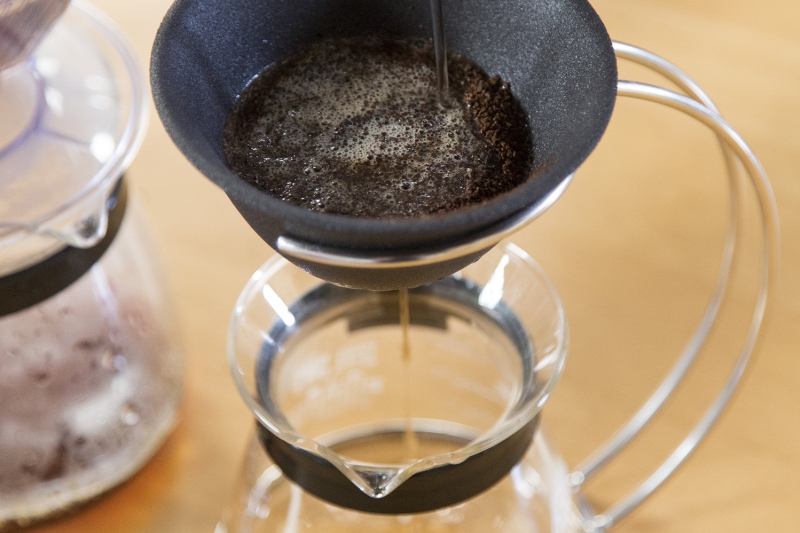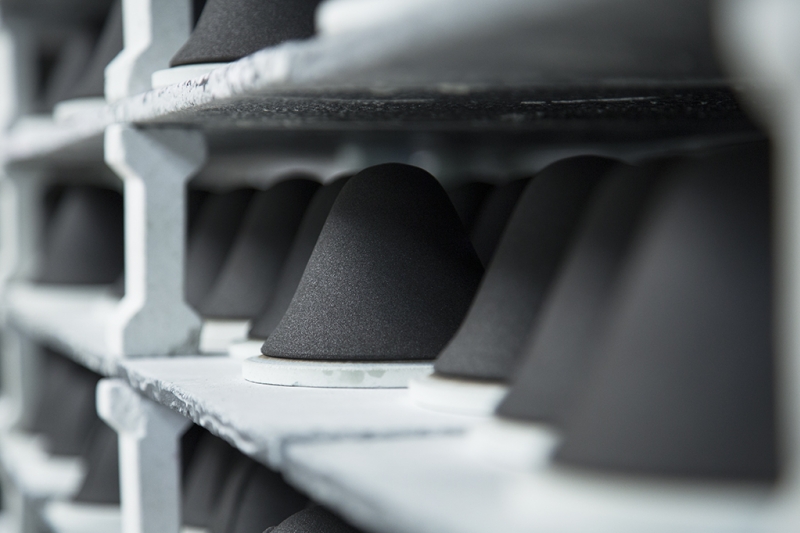Interview: BIG-GAME
The Switzerland-based collective BIG-GAME are made up of Augustin Scott de Martinville, Elric Petit and Grégoire Jeanmonod. Together they produce thoughtful industrial designs for everyday use. For the 2016/ project BIG-GAME have explored the technically-advanced materials and processes available in Arita.
- Did you have any preconceptions about Japanese porcelain before beginning this project?
We knew very little about it before we began. Our first encounter with Arita porcelain was with the project 1616 / arita japan that was shown in Milan three years ago. We were amazed at the quality of those products, especially with the functional non-glazed porcelain tableware by Teruhiro Yanagihara that was first shown then. It is something that we were always taught to believe was impossible. We were very keen to work with these guys.
- Were you asked to concentrate on anything in particular in the brief?
We were assigned a specific pottery and paired with a young entrepreneur. The pottery we are working with is interesting in that the facility looks typical and yet they are making industry level ceramics there to the highest standards – all within the context of what seems to be a simple workshop.
- Craft and technology marry well in Arita, was that what you found?
It is beyond anything we could have imagined; the technology available to us was amazing. For example, in Arita they are able to injection mould porcelain, a process we had never come across before. Our collection for the 2016/ project specialises in advanced technological processes yet they feel like handmade processes. In our pottery’s small workshop in Arita you might find elderly craftsmen busy with what seems like craft production. But, in fact, the work they are doing is incredibly hi-tech.
- How have you employed these hi-tech processes and materials in your designs?
It was clear from the beginning that our partner had a material and processes that we should explore. The pottery produces a special matt, porous, material that can act as a filter – it is currently used to make coffee filters. They also make a kind of porcelain that is very heat resistant. Having these two very technical and advanced materials to work with really dictated what we chose to do; we have incorporated both of these into a collection of kitchen and tabletop objects. Our work for 2016/ has had an element of research about it and our final collection will demonstrate the qualities of the materials we have been given to work with.
- In what way are your designs typical BIG-GAME products?
We always try to understand the context of a product as well as we can. And we always try to make it relevant. In this particular case we have focused on achieving the function as well as possible given the technical capacities of the product.
- There is a definite leaning towards tools and objects with utility in your work, does this project fit with that thinking?
The objects we have designed are tools for everyday life.
- What have been the surprisingly elements of working in Arita?
That the potteries are so keen to innovate and devise new ways of working. Normally, with a very old and established company there are way of doing things and you, as the designer, have to work around those. Here there was never a ‘no’ and we felt that whatever we wanted the pottery to try they remained very open.











